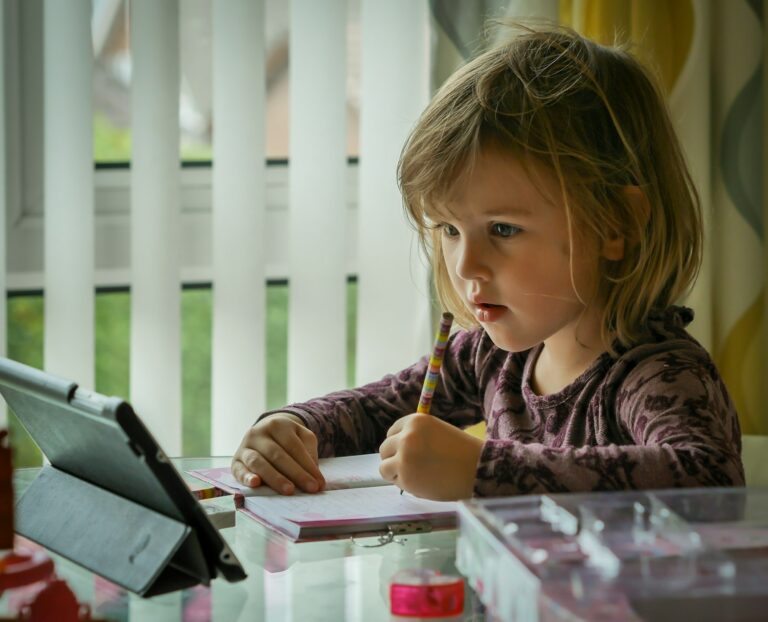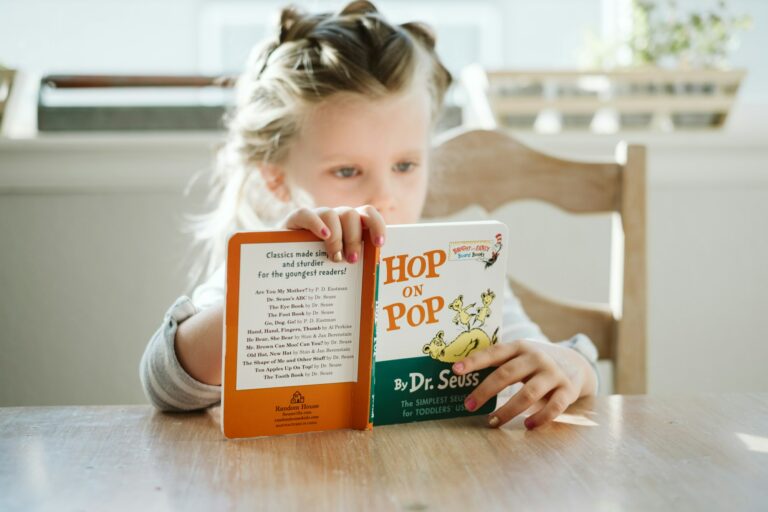Raising a child whose energy feels boundless, whose curiosity explodes at every turn, and whose legs rarely seem to tire—such a scenario, equal parts exhilarating and exhausting, is well-recognised by many parents. Suddenly, silence is a rare visitor, and terms like “rest time” or “quiet moments” often seem like distant dreams. But behind that swirl of movement lies a unique temperament—one that, when understood and embraced, can blossom into creativity, resilience, and even empathy. Many parents grapple with the fine balance: offering encouragement for their child’s exuberance while gently steering this abundant energy into productive and harmonious routines. How do nutrition, structured environments, and strategies grounded in medical research support both the child and the family’s well-being? What distinguishes natural, high energy from something that might require more attention? Here, you’ll find practical parenting tips for energetic children—infused with scientific insight, didactic explanations, and a rhythm designed to match the vibrance of daily family life.
Recognising energetic children: temperament, traits, and misconceptions
You might look at your child and notice a constant buzz—feet tapping, hands busy, questions pouring in rapid succession, and a seemingly endless urge to climb or leap. Is this simply “being playful” or something more persistent? Energetic temperament reflects a natural variability among children in nervous system activity (often driven by genetics and early environment). Traits such as high movement frequency, intense sensory seeking (touching, jumping, running), fierce curiosity, and strong emotional reactions are not signs of disrespect or wilful disobedience.
Myth persists: Do all energetic children have ADHD? The short answer, backed by paediatric studies, is no. ADHD (Attention-Deficit/Hyperactivity Disorder) is a medical diagnosis, not a personality trait. Only when hyperactivity is coupled with inattention or impulsivity causing significant impairment—across home and school—should further assessment be considered. Routine paediatric follow-ups can reassure parents and rule out underlying medical or sleep issues, such as iron deficiency or screening for sleep disorders.
Punishing high energy is ineffective and can harm self-esteem, medical literature confirms. Instead, parenting tips for energetic children focus on channeling drive, providing context, and nurturing confidence.
Emotional landscape and self-regulation: validation and techniques
Rarely static, energetic children can swing between joy, frustration, or disappointment almost instantly. Emotional intensity—sometimes labelled “overreactive”—stems from rapid shifts in brain chemicals like dopamine and noradrenaline. Validation becomes essential. Naming emotions aloud (“You look very excited right now! Let’s take a breath together”) not only soothes but wires their brains for better self-regulation, a core finding in developmental neuropsychology.
Breathing exercises, gentle mindfulness (using stories or music), and modelling calm responses reduce cortisol (stress hormone) both in adults and children. If your own patience wears thin after a long day, medical research encourages a pause. Stepping away, communicating calmly (“Mummy needs two minutes to breathe, then we can talk”), or reflecting on personal stressors achieves more than forced control.
Practical approaches:
- Carve out five-minute solo breaks pre or post school runs.
- Use countdowns or visual timers during transitions to prepare the child—and yourself.
- Enlist support if tension rises; teamwork is not a sign of weakness.
Physical needs: movement, nutrition, and sleep—what science says
Why do some children “bounce” while others are content to watch? It’s partly neurologically wired. High-energy children benefit tremendously from regular, planned physical outlets—think sports, outdoor play, or “heavy work” (carrying groceries, pushing laundry baskets), which help regulate proprioceptive input and modulate adrenaline.
Nutrition plays an underrated role in stabilising energy peaks and troughs. Frequent nutrient-rich snacks—whole grains, protein-rich lentils, nuts, curd, and fresh fruits—keep blood sugar steady (a major driver of mood and stamina). Dehydration, even mild, can amplify irritability and trouble with focus; keep a water bottle handy all day. Reducing refined sugar lessens wild spikes in energy and crashes that follow.
Sleep hygiene, meanwhile, must not be underestimated. Medical research links consistent bedtime routines, minimal screen exposure pre-bed, and soothing sensory rituals (dim lights, soft music, gentle massage) to better melatonin release and improved sleep quality. If persistent settling issues arise, consult your paediatrician for evaluation of sleep disorders or environmental sensitivities.
Social development: guiding connection and empathy
Often gregarious, energetic children thrive in socially stimulating environments but may need extra guidance around sharing, waiting their turn, and reading cues. Medical studies on child socialisation recommend guided group play, simple cooperative games (passing the ball, constructing blocks together), and storytelling sessions to build empathy and communication.
Regular playdates, art projects, and community activities (like football club or music classes) foster a sense of belonging and teach vital negotiation skills. Collaboration between parents and educators is essential: sharing routines, sensory triggers, or successful calming strategies ensures consistency and predictability for the child.
Structure and environment: design for predictability and calm
Imagine trying to learn in a world where the rules keep shifting—predictability is a hidden superpower for energetic children. Visual schedules, set times for activities, and simple, consistent boundaries reduce anxiety and support behavioural control. The keyword here? Clarity. Paediatric occupational therapists advocate for visual charts, token boards, or colour-coded timetables to help children anticipate change.
A calm-down space, equipped with sensory objects (stress balls, soft cushions, gentle lights), allows for voluntary self-regulation—a concept supported by child development psychology. “Heavy work” stations—such as indoor obstacle courses or trampolines—offer big muscle activity compatible even during monsoon season.
Sample schedules inject variety and reliability: wake-up routines, energetic play, focus time, snack break, creative quiet period, outdoor session, calming dinner, bath, and gradual wind-down all help frame the child’s day without rigidity.
Encouraging positive activity: sports and creativity
Which sports and activities capture abundant energy while supporting holistic development? Soccer, swimming, martial arts—each improves coordination, social skills, and cardiovascular health, while tapping into group belonging. Indoors, inventive games like “Simon Says”, balloon badminton, or building projects foster both movement and cognitive challenge. Rotating games prevents boredom and leverages novelty’s motivating pull.
Board games and role-play sessions not only capture attention but teach turn-taking, patience, and flexible thinking. Frequently introducing new materials (clay, blocks, musical instruments) boosts dopamine pathways associated with learning and satisfaction.
Fostering focus, attention, and emotional health
Concentration, for a high-energy child, is not just about sitting still. Cognitive neuroscience underscores the value of breaking tasks into smaller steps, frequent movement breaks, and using fidget toys or weighted lap pads. Outdoor sessions—especially those in nature—demonstrably improve attention spans and reduce hypervigilance.
Teaching relaxation and self-calming techniques (like “smell the flower, blow out the candle” breathing, yoga stretches, or quiet colouring) cements self-regulation skills. Sensory tools—beads, stress putty—add immediate tactile feedback, helping maintain focus. During calm moments, introduce mindfulness or short guided audio sessions to embed these habits early.
Social and emotional resilience: nurturing empathy and adaptability
Modelling empathy in daily interactions is easily overlooked; labelling emotions, offering comfort, or discussing feelings during conflict teaches children to name and manage both their own and others’ states. Predictable routines, celebrated small wins, and scaffolding through transition periods (with countdown timers or visual reminders) reduce stress and awaken a healthy growth mindset.
Of note: emotional resilience grows through encouragement, regular achievement, and transparent communication around setbacks. These approaches build robust neurological circuits for adaptive coping in later life.
Communication and discipline: gentle connection
Clear rules—communicated simply, eye to eye—are far more effective than frequent punishments. Positive reinforcement (“I noticed you helped put away your toys, great teamwork!”), small visual rewards, and consistent feedback drive behaviour far better than negative consequences. Connecting emotionally before correcting actions helps defuse tension and increases children’s openness to redirection.
Natural consequences—such as missing out on a treat if clean-up is unfinished—establish logic without shame. After a strong parental reaction, apologising (“Today I was upset, I should have spoken gently”) demonstrates that mistakes are opportunities for learning, not threats to connection.
Preventing overwhelm and addressing challenging behaviours
Restlessness, blank stares, or sudden irritability often signals overstimulation—a surge in external or internal sensory input overwhelming their system. Medical sources advocate regular “sensory breaks”: jumping, stretching, squeezing tactile materials, or brief retreat to a calm zone. During meltdowns, validation, maintaining boundaries, and modelling self-soothing reinforce security and teach healthy responses over time.
Routine trackers, understanding triggers (hunger, overstimulation, unfulfilled need for movement), and building regular transition rituals mitigate escalation. If challenging behaviours persist or interfere with daily life, discussing concerns with your healthcare provider ensures timely guidance.
Nutrition and maintaining consistent routines
A steady diet rich in whole grains, protein, fruits, and vegetables—along with regular hydration—forms the cornerstone of alertness, mood stability, and attention regulation. Encourage healthy snacks (nuts, seeds, fruit, curd, whole grain crackers), swapping sugar-laden items for natural alternatives. Limiting high-sugar processed foods prevents glycaemic spikes, which can affect not just mood but cognitive performance as well.
Involve children in meal planning and preparation; autonomy increases buy-in for healthy choices, and family meals foster connection.
Working with schools and caregivers
Children are best supported when home and school collaborate. Share successful routines, sensory tools, or calming strategies with teachers; request movement breaks or flexible seating if required. Transparent communication ensures accommodations—sensory fidget aids, access to quiet corners—are respected and available.
Ongoing support meetings, discussing strengths as well as challenges, create a network that upholds your child’s dignity and confidence at every step.
Nurturing strengths, confidence, and individuality
Every spark—art, music, construction, problem-solving—deserves recognition. Observing and tuning into interests, rotating resources, and providing space for hobbies (not just structured activities) lets children develop mastery and self-esteem. Choose projects together, celebrate effort, learn from mistakes, and value the journey as much as the outcome.
Parental self-care and support systems
Supporting energetic children demands reserves of patience and compassion. Prioritise your own breaks, enjoyment, and exercise. Reach out to parent groups, mental health professionals, or child development experts if challenges linger or escalate. The journey is dynamic; realistic expectations and compassionate self-talk nourish the entire family system.
Key Takeaways
- Practical parenting tips for energetic children blend routines, encouragement, and structured outlets to foster both calm and creativity.
- Emotional validation, clear communication, and self-regulation skills support balanced development.
- Evidence-based approaches—ranging from nutrition to sensory strategies—calm restlessness and nurture resilience.
- Advocacy with schools and building a strong support network empower both child and parent.
- Each child’s journey is personal; remaining open, adaptable, and willing to seek advice from professionals ensures well-being thrives.
- For free health tools and daily parenting support, parents can download the application Heloa for personalised guidance and child health questionnaires.
Questions Parents Ask
How can I help my energetic child concentrate on schoolwork?
Concentration, especially for a child bubbling with movement, can sometimes feel like asking a river to be still. Try breaking tasks into smaller portions, allowing short “energy breaks” between sessions, and using visual checklists where each step is clear. A quiet, dedicated space (even with a simple table and chair) helps reduce distractions. Warm praise for any effort—“You worked so hard on this!”—boosts motivation. Stay close for reassurance, but remember, each child’s pace can differ significantly.
Are there activities that channel my energetic child’s energy indoors?
Absolutely—rainy days or busy streets are no restriction! Create mini obstacle courses with household items, encourage dance parties, or set up balloon volleyball. Art and building blocks keep minds engaged and fingers busy. Sensory bins (rice, lentils, sponges) offer tactile satisfaction. Rotating the games—something new every week—maintains interest and gives their abundant energy a safe, positive route.
When should I consider seeking professional advice about my child’s energy levels?
High energy, on its own, speaks of temperament and individual wiring, not problems. If daily routines, schoolwork, or friendships become persistently difficult or overwhelming, or if a child is unable to settle even with guidance and strong routine, consult your paediatrician or a child development specialist. Assessment is a sign of care—not deficit. Professionals provide kind, tailored support for both you and your child, ensuring growth remains joyful and steady.









